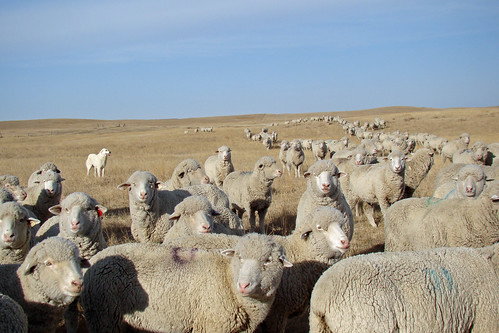
Conservation has long been a key element on Dan and Sharon Anderson’s ranch. The Andersons, who raise sheep and cattle west of Glad Valley in northwestern South Dakota, have a passion for healthy resources that grew out of respect for what conservation has done for their ranch.
In 1959, Dan’s father, James, purchased the ranch, which had seven pastures. With help from USDA’s Soil Conservation Service (now the Natural Resources Conservation Service), the elder Anderson started cross-fencing the larger areas to give his livestock better forage options and nutrition. When he took over the farm in 1990, Dan expanded this practice, continuing to work with NRCS to implement an extensive rotational grazing program. Today, the Andersons rotate both cattle and sheep around 32 pastures, with plans to divide the fields further.
Through the smaller pastures, Dan has been able to encourage the growth of certain plant species. Now he has a more nutritious mixture of plants in his pastures.
As part of their NRCS conservation plan, the Andersons have also planted thousands of trees and shrubs that now provide habitat for wildlife and shelter for livestock during the winter.
In 2012, the Andersons tried ultra-high stock density grazing, also known as mob grazing. This type of grazing improves soil health, as the sheep are moved to a new paddock every 24 hours and that means the manure is more evenly spread. Dan thinks that through mob grazing, the sheep are now harvesting 30 percent more grass, and he is looking forward to trying this strategy again in 2013.
In their pastures, the Andersons built three dams, laid miles of pipes and installed 20 water tanks. These conservation improvements ensure that there is a water source in each pasture, making it possible to move the sheep to different areas of the ranch. In the 60 lambing pens, an automatic watering system now dispenses water, saving time and energy.
The Andersons say they enjoyed working with NRCS because the conservation planning process integrates sound resource management with their business goals and objectives.
“We want to make the environment the best we can, yet maintain profitability,” says Dan, which is exactly what NRCS helps them do.
They look forward to passing on the land in better condition than when they started—just as Dan’s dad did for them.
Follow NRCS on Twitter.
Check out other conservation-related stories on the USDA blog.

